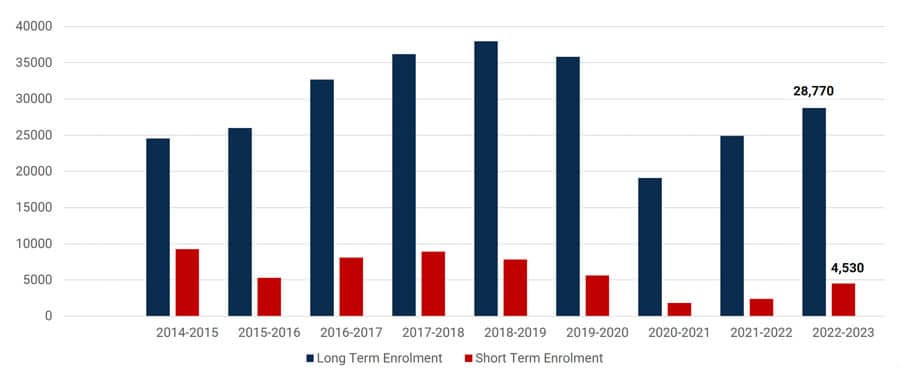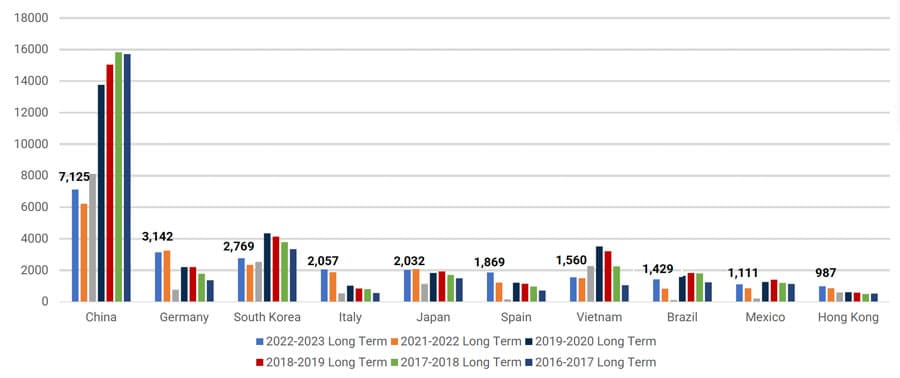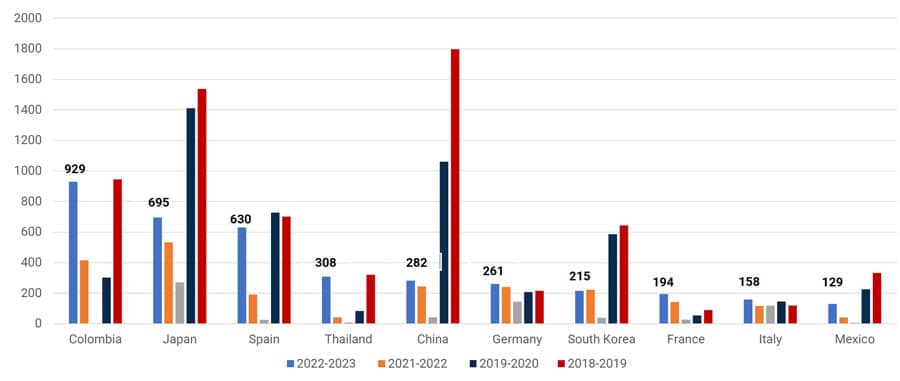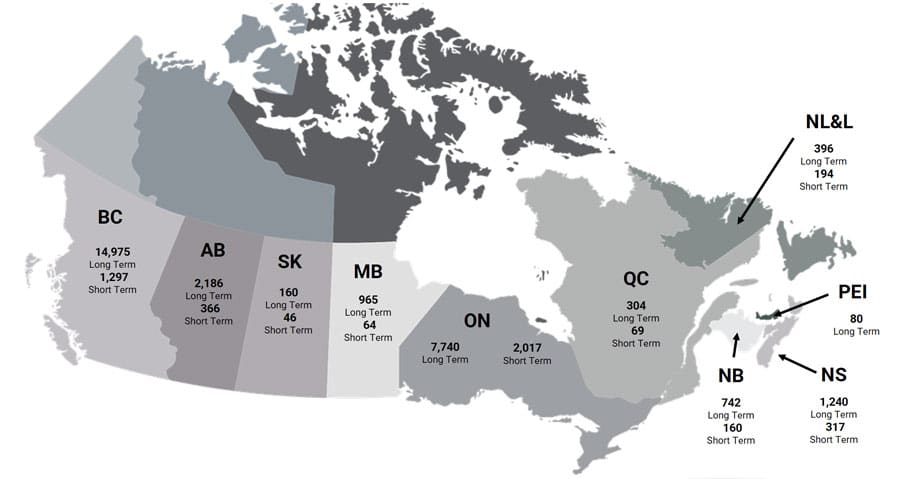International enrolment in Canadian K-12 recovered to more than 80% of pre-pandemic levels in 2022/23
- International enrolment in Canadian public K-12 schools grew significantly in 2022/23
- Half of the Top 20 source market countries for long-term programmes (ranging from one semester to a full year) sent more students than ever before
- China remains the top source country for long-term programmes, while Colombia is now the top sender of students to short-term programmes of less than a semester
Canada’s K-12 public schools enrolled just over 33,000 foreign students in 2022/23. That total includes nearly 29,000 in longer-term programmes of up to a year in duration and another 4,500 in short-term studies (that is, for less than a full semester). Those figures come from the latest annual survey of members of The Canadian Association of Public Schools – International (CAPS-I), and they represent year-over-year growth of 15% for longer-term enrolments and 88% for short-term students. CAPS-I also notes that their membership now includes significantly more Francophone schools.

With that growth in 2022/23, foreign enrolment in Canada's public K-12 schools has now recovered to roughly 82% of pre-pandemic levels.
Long-term programmes
The top source country for Canadian K-12 schools enrolling students in long-term programmes remains China, which sent more students than in 2021/22 but which is still much less of a contributor than in previous years. Half of the countries in the Top 20 sent more students in 2022/23 than they had done before the pandemic, including Germany, Italy, Spain, Hong Kong, Thailand, Belgium, France, Switzerland, United States, and Chile. The Top 10 sending markets are outlined in the chart below.

Short-term programmes
Japan has long been the top source country for short-term K-12 enrolments in Canada, but in 2022/23 Colombia displaced it. Despite overall growth year-over-year, short-term enrolments from the key markets of Japan, China, South Korea, and Mexico have not recovered to pre-pandemic levels. By contrast, Thailand and France are now sending many more students than in 2019/20.

Distribution of students
As in the higher education sector, Ontario and British Columbia (BC) host by far the greatest proportion of K-12 students from abroad. Most students are enrolled in long-term programmes in these provinces. In other provinces such as Saskatchewan, Quebec, and Newfoundland & Labrador, there is notably more balance between long-term and short-term enrolments, even if the former still exceed the latter.

For additional background, please see:
















